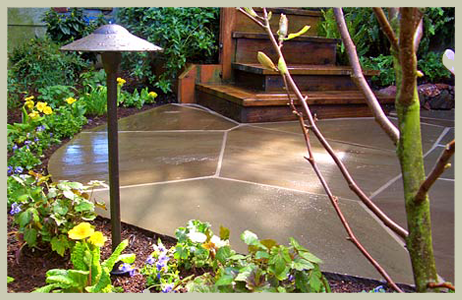 Outdoor lighting serves a lot of great purposes. For one thing, it’s a practical way to extend your outdoor entertaining hours and backyard playtime. Your family and friends don’t have to head indoors just because the sun goes down.
Outdoor lighting serves a lot of great purposes. For one thing, it’s a practical way to extend your outdoor entertaining hours and backyard playtime. Your family and friends don’t have to head indoors just because the sun goes down.
From a security standpoint, a well-lit yard is a safer one. Motion-detecting lights can discourage criminals and critters from trespassing. Walking the dog or arriving home late at night is less of a concern when you can clearly see where you’re stepping.
Finally, from an aesthetic standpoint, outdoor lighting is all about mood-setting. Quality lights and installation services can help you achieve the perfect feel for your outdoor space, whether you’re trying to recreate an upscale, urban rooftop or a rustic, farmhouse glow.
Here are three tips to consider before installing outdoor lighting:
1. Contact a Professional About Lighting Options
Outdoor lighting projects don’t offer the best opportunities to test your handyman skills. On the contrary, you should always consult with qualified professionals before starting—or even planning—your outdoor lighting scheme. Some amateurs buy the wrong products, only to discover giant halogen lamps everywhere make a yard look like a football stadium. Strong, high-voltage lamps can also make your sanctuary feel like a search and rescue mission.
Instead, trust experienced landscape designers to make strategic use of low-voltage lights and LED lights along paths and patio perimeters. If you truly need major watts for security or outdoor playing courts, designers can help you install and position the best lighting options.
2. Establish an Outdoor Lighting Budget
Premium, low-voltage lamps with glass bulbs and metal canisters are popular options, but they may not fit your budget. Plastic versions are cheaper and can potentially save you $5 to $10 per unit. Either way, you can’t afford to skimp on hardware (the voltage regulator needs to be large enough to handle all the lights that will be connected). So it’s important to calculate costs with a professional first.
3. Pay Attention to Ongoing Maintenance
Today’s landscape lighting is easy to program, but it doesn't completely take care of itself. Effective outdoor lighting will always require maintenance. Dirt, bugs, and debris can collect near bulb sockets, which is unsightly and potentially hazardous. Over time, you may need to replace old, chewed, or burnt wiring. And if you dig up your yard at any point down the line, you’ll want to be sure you carefully remove and replace any in-ground units.
Learn more about outdoor lighting for your yard by contacting our team today.

 781-646-5555
781-646-5555